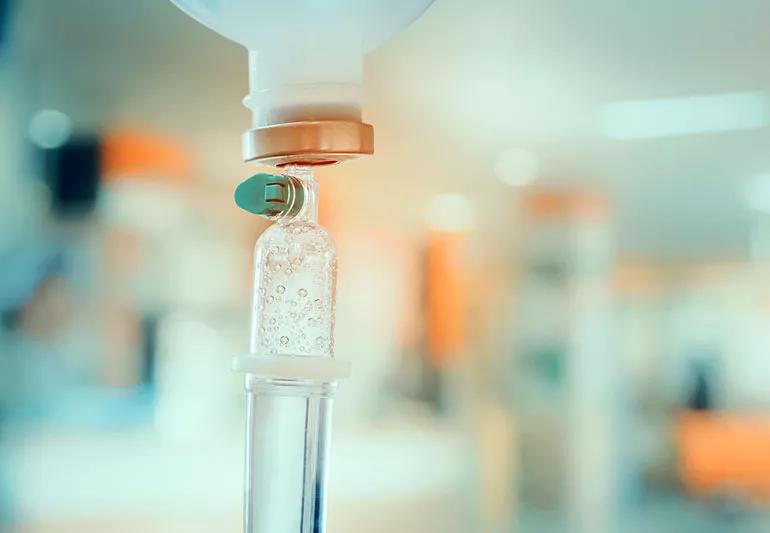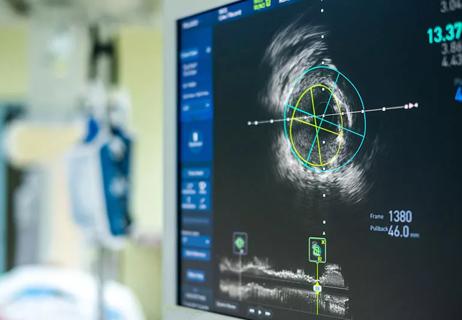They put the kibosh on overzealous nerves

You’re used to being the go-getter-est of them all. But with complex regional pain syndrome, you can barely get up. It’s really throwing a wrench into your fast-paced lifestyle.
Advertisement
Cleveland Clinic is a non-profit academic medical center. Advertising on our site helps support our mission. We do not endorse non-Cleveland Clinic products or services. Policy
CRPS often strikes after recovery from an injury — a sprain, fracture or minor surgery. It results in intense pain or sensitivity to small stimuli, typically in the arms or legs.
It can be difficult to treat, but researchers have found that ketamine infusions may be able to get your nerves to stop firing pain signals so you can get back to saving the day.
Pain medicine specialist Jijun Xu, MD, PhD, answers some questions about CRPS and how it’s treated with ketamine infusions.
A: The answer is not so clear-cut. CRPS, formerly known as RSD disease, isn’t well understood and is often misdiagnosed. So first your doctor needs to rule out other possible causes of pain, like diabetes or pain syndromes.
Next, the doctor will ask if you have at least two or three of these symptoms:
A. Once you’ve been diagnosed, your doctor will try other treatment methods first to relieve the pain.
Ketamine may be the answer if these treatments weren’t successful:
Advertisement
A: With CRPS, we believe there are changes in the central nervous system at work. These changes wind up the pain signals from your body. Normally, bumping your leg or touching a cold item would cause a small amount of pain. In someone with CRPS, those stimuli cause intense, severe pain.
This type of amplification of pain is believed to be due to activation of one of the nerve cell receptors, namely NMDA receptor. Ketamine Is a potent anesthetic that works on these receptors, blocking them from firing, which decreases the pain.
A: Ketamine isn’t for every patient with CRPS, but it can provide real relief for many. We have limited evidence from controlled studies, so we reserve ketamine as a last resort treatment for CRPS.
Before we start ketamine therapy, we screen people carefully to ensure they don’t have conditions that could worsen with ketamine, like schizophrenia or heart rhythm issues.
A: We deliver ketamine into your blood through an intravenous (IV) line, called an infusion.
At Cleveland Clinic, patients receive ketamine infusions at an outpatient clinic. You come to the clinic every day, Monday through Friday, and receive your infusion for three to four hours each day. We titrate the dose of ketamine to get optimal effects.
A nurse monitors you throughout the infusion to make sure these vital signs remain normal:
A: The dose of ketamine we use for infusion is sub-anesthetic, or lower than that used for anesthesia. We start infusions at a low dose, so you will likely be more alert.
As the dose increases, you may get drowsy and fall asleep. We’ll ask you to respond to stimuli during the infusion, so you are never completely unconscious.
You’ll stay at the clinic for at least one hour after we stop the infusion. Most of the time, you’ll be awake, alert and able to move around. However, you won’t be able to drive home, so arrange for someone to take you home from your infusion appointment.
A: We want to see meaningful pain relief throughout the week. If you’ve had no benefit, we may stop after day one or two of infusions. Typically, if a person can get through day five, the benefit potential is increased.
However, we may need to stop infusions if you suffer extreme versions of these side effects:
A: An estimated 50 to 60 percent of people get relief from ketamine infusions. Most patients feel the difference right after the infusion, but every patient’s response is different.
Advertisement
You may have relief for one month, or it may last up to 11 months. If you felt significant pain reduction, we could repeat the infusion three to six months after the first one. If you have multiple infusions, we’ll keep an eye on your liver function, because ketamine may cause a temporary increase in the liver enzymes.
Advertisement
Learn more about our editorial process.
Advertisement

In a major study, 93% of people saw a reprieve in pain

Most recommended precautions center around minimizing bruising or swelling

Even one drink can have an impact on your cognitive function leading to slurred speech, blurred vision and impaired memory

Understand who may (and may not) benefit

Lorem ipsum dolor sit amet. Et odio Quis vel ipsam omnis eum alias deleniti et placeat impedit non voluptas galisum hic autem enim et cupiditate aliquid. Est beatae quidem non facilis autem ut commodi nisi aut tempore rerum et dolores voluptatem cum enim optio id sapiente quasi. Ad laboriosam officiis 33 cupiditate sequi ea voluptatum consectetur qui necessitatibus voluptate et quasi doloremque et facere explicabo quo explicabo officia

Seeking help through therapy can be an important step in improving your quality of life when you have UC

Type 2 diabetes isn’t inevitable with these dietary changes

Applying a hot or cold compress can help with pain